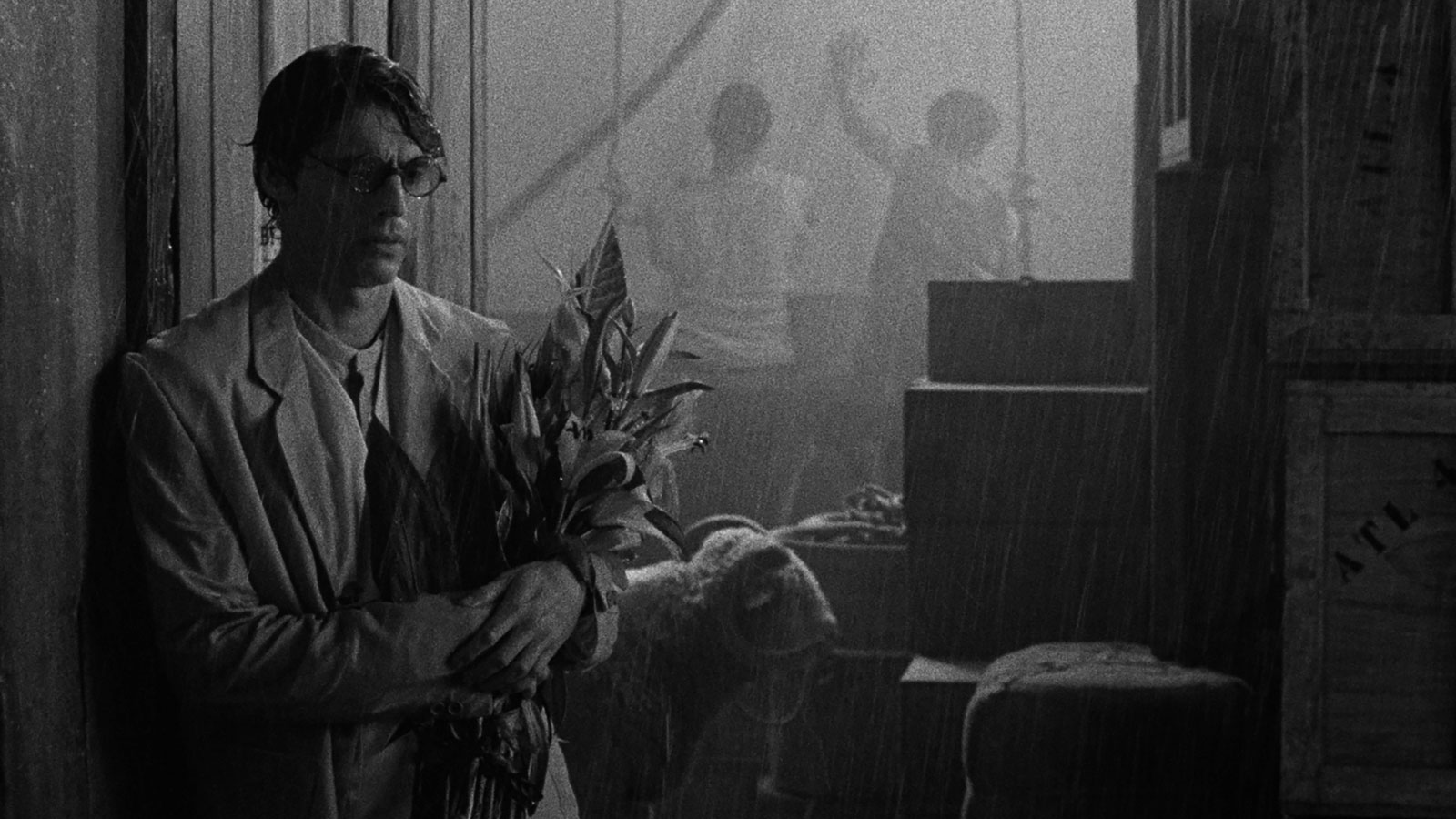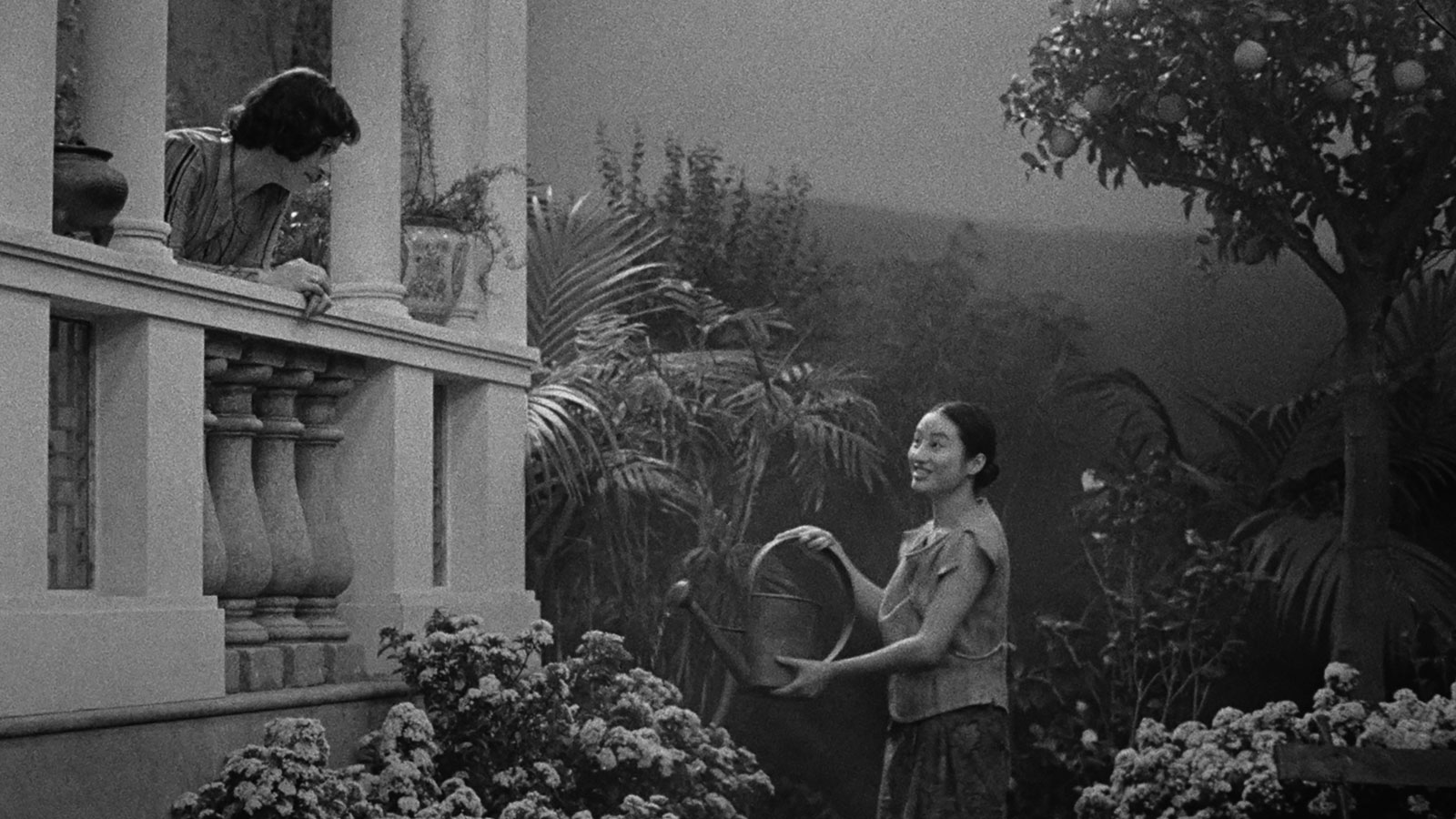Fake It So Real: Miguel Gomes’s Grand Tour

Critics Campus 2024 participant Austin Lancaster looks at the intersecting layers of artifice in Miguel Gomes’s fantastical journey through East and South-East Asia, past and present.
Miguel Gomes has often described his films as remakes of The Wizard of Oz (Victor Fleming & King Vidor, 1939). Like Dorothy, who sees her familiar Kansas transformed into the fantastical land Oz, the viewer of Gomes’s films is transported between everyday life and the world of fiction, even while the umbilical cord between them remains intact. The 52-year-old Portuguese filmmaker has been dreaming up hybrids of fact and fantasy for a while now. His second feature, Our Beloved Month of August (2008), was a documentary portrait of village life in his native country that morphed halfway through into a tender melodrama starring the local inhabitants; while the ambitious three-volume Arabian Nights (2015) formed a kaleidoscope of narrative approaches, weaving together news-derived vignettes of Portugal’s economic crisis with ancient tales of Scheherazade’s Baghdad.
Grand Tour, Gomes’s latest, is daringly spliced together from two very different shoots. The first, captured by a skeleton film crew, constitutes what the director has called “fabricated found footage”: an audiovisual record of a trip around contemporary East and South-East Asia that winds its way through Myanmar, Singapore, Bangkok, Saigon, Manila, Osaka, Shanghai and inland China. A script was written by Gomes and a “central committee” of screenwriters in response to what was captured, forming the basis of an exquisite studio concoction: a fictional journey made in 1918 that retraces the same steps. This tall tale follows Edward (Gonçalo Waddington), a cowardly Brit who runs away from his betrothed on the day of their marriage, and Molly (Crista Alfaiate), the determined bride-to-be who chases after him.
The scenario is the stuff of Hollywood’s comedies of remarriage of the 1930s and 40s. Edward is a nebbishy, inward sort, all nervous Adam’s apple and brow near-permanently furrowed in self-pity. In contrast, Molly’s screwball-in-search-of-a-scene-partner style is warm and open, marked by her signature habit of blowing a raspberry through her lips as she laughs. However, genre expectations are subverted: the two leads never share the screen, and both of their journeys take on a lonely, murkier tone as they progress.
In free-associative style, the present-day footage and studio portions flow musically into each other. A narration overlaps between the two, spoken not by the ‘authoritative’ Westerner of convention, but a succession of male and female Asian voices, speaking in the languages of the cultures visited. There are points where nature seems to extend into the studio space, such as one graceful sleight-of-hand edit that connects a character rustling his way through studio foliage to a breathtaking real-world jungle vista. More often, the characters’ inner experiences find expression in surprising digressions. Edward’s dizzy uncertainty finds its match in a Ferris wheel being turned by the muscle of young Burmese men who dangle and clamber over its frame; later, his slide into dissipation is paired with wounded gamecocks and anxious Filipino gamblers. For Molly, a period of convalescence and romantic possibility is poetically paired with a bountiful harvest of live frogs and fish ready to be sold at a Saigon market. Also interspersed throughout the film are fleeting shots of traditional puppet shows, including dancing Burmese yokthe pwe marionettes, Thai nang talung shadow puppets, a Chinese dragon and a Vietnamese hand puppet performance – the last of these involving a quartet of performers cooperating to create the impression of a courting hen and rooster pair.

Grand Tour
The allusions to puppetry are apt in a film that repeatedly draws our attention to its artifice. In one imaginative cut near the beginning of the film, the sparsely inhabited Yangon dock of the present day becomes a bustling clutter of activity straight out of Josef von Sternberg’s Hollywood, as our would-be husband ducks past cargo, travellers and a full-on marching band. This is a story teeming with coincidences, in which characters stumble upon each other in the middle of the jungle and storms rumble in time with the drama. In a restaurant scene, Edward bumps into Molly’s brash barfly cousin, receives a telegram and gets fitted by a Burmese tailor, all in a single condensed sequence of action. The effect is something of a tongue-in-cheek reflection of the two Englishmen’s personal and collective myopia, as they barely seem to notice the existence of the local people serving them; with the exception of Molly, the Western characters play as different flavours of self-absorption. In contrast, the cuts to real-world footage tend to have a centrifugal effect, opening our gaze to the peripheries, where a game of mahjong, a worker harvesting lotus flowers or a pair of pandas sitting in a tree can enjoy equal prominence.
However, to hang the label ‘documentary’ on these excursions would be amiss. Like Robert J. Flaherty – for whose ethnographic fabulations, such as Nanook of the North (1922), that genre name was misleadingly coined – Gomes eschews the ideal of the objective camera, adopting instead the eye’s habit of making myth out of the ordinary. There’s something enchanted about this film’s equivalent of Kansas, too: a Bangkok montage of rickety tuktuks, weaving motorcycles and a fishing boat forms a waltzing ode to the thrill of transit, accompanied by the romantic sweep of the ‘Eton Boating Song’ and Johann Strauss’s ‘Blue Danube’. In the Philippines, Gomes stages a karaoke party on the back of a jeepney; while in Shanghai, a guitar-strumming busker is transplanted from the street to the deck of a moving boat. These amplifying treatments might feel fairytale-like, but so can the larger-than-life moments that are scattered throughout routine existence; as Flaherty put it, “One often has to distort a thing in order to catch its true spirit.”
In thinking about artistic comparisons to Grand Tour, I find myself reaching towards musical ones. One is Japanese polymath Haruomi Hosono’s ‘sightseeing music’, expressed in records such as the lushly tropical Paraiso, which acknowledged its exteriority while also exuding an unabashed touristic enthusiasm for novelty and spectacle. Also, something of Grand Tour’s radical fusion of artifice and authenticity can be found in the neo-exotica of Chilean musician Nicolás Carcavilla, aka Embassador Dulgoon. In his 2021 album Eden’s Fuselage, Carcavilla creates a hot and swampy aural world, imagining mythical secrets hidden in the natural environment surrounding his hometown of Caburgua. Sci-fi synthesisers and exotic motifs are freely layered with field recordings and traditional instruments, as each recontextualises the other, creating a whole unlike any of its parts.
In Grand Tour, sightseeing and cinema are cut from the same cloth: two apparently ‘vulgar’ forms of narrative making that paradoxically open up a window to the world even as they conceal it. Gomes is a believer in the profundity of surfaces, and his art forms a riposte to a lineage of intellectual mistrust – one that sees cinema and popular entertainment as an opiate of the masses, with its seductions of character identification and emotional involvement. The cathartic final flourish, a leap of faith involving a film crew shining a light down from the heavens like gods, is an appropriate one. Gomes lets us have our cake and eat it too, in the spirit of Rainer Werner Fassbinder’s reproach of Bertolt Brecht’s epic theatre: “I go farther … I let the audience feel and think.” Drawing attention to storytelling’s illusions need not, after all, lead to disillusion – and Grand Tour is a magic trick that continues to delight even after its secret is revealed.